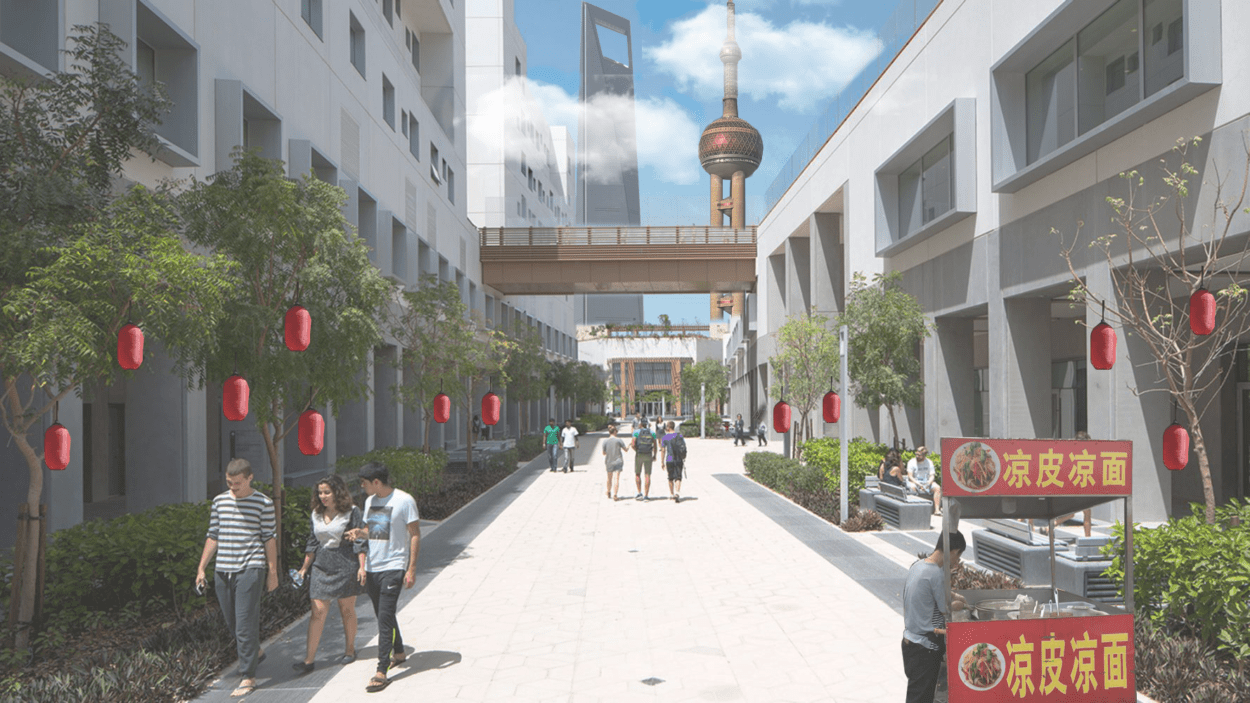As with most creative and artsy projects, my mind and imagination came to a bit of a standstill. During class time, I was messing around with a picture of the Shanghai skyline, so I thought I might as well try and incorporate some elements from that into my project. For the base, I used a picture of a place that I’m sort of missing these days – the NYU Abu Dhabi campus. I thought it might be fun to try and incorporate some elements from what I have seen in my brief time in China so far to a more familiar setting, creating a crossover of what seems to be two very different, but familiar settings.
This was the final result:

The source pictures that I used were the following :





The Process:
The first step was to extract the necessary elements from the source pictures – the lanterns, the Pearl Tower, the Bottle Opener, a street food vendor and some clouds. This was quite easy to do with the the pen tool. However, if inspected very, very closely, it can be seen that the “Photoshopped” elements have very crude edges. This is because I did not create a smooth enough contour, but for the purposes of the image I wanted to create, it seemed sufficient. The next step was to add the necessary elements in. Once, I did that, I used the “History Brush Tool” to restore some of the elements from the original image that were being overlapped with the new image. This made the final image look more natural, and can seen at the intersections of the bridge and the middle of both the Pearl Tower and the Bottle Opener. The final step was to add a bit of haze and cloudiness to the scenary since that was the atmosphere I was familiar with when walking around Shanghai. To do this, I added a solid color of gray to the image, and reduced its opacity down to a small percentage to give the image a hazy feel. Next, I reduced the saturation of the image, followed by the contrast. (I used this as a reference to do this last step).
And, this was the outcome!



